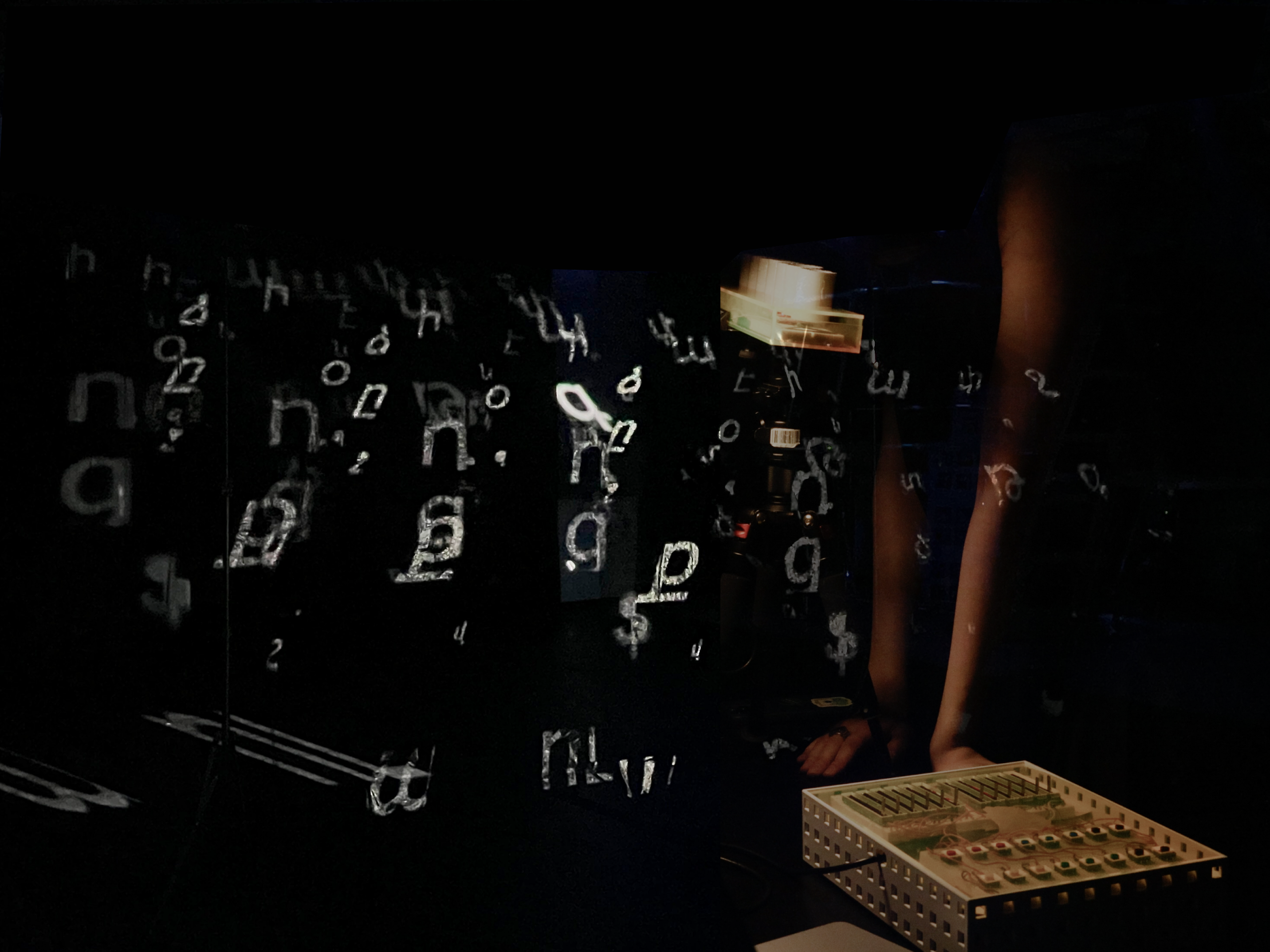Thesis Project
Lusine Kirakosyan
My project tranI want people from different cultures to care about each other. We need care. When you’re familiar with a culture, you care more about its people.

Project Description
This project is an instrument that transforms the 39 letters of the Armenian alphabet into melodies, blending cultural heritage with sound design. It features two parts: one inspired by the Armenian duduk, a traditional wind instrument, and the other by a modern MIDI controller. Each letter is assigned a natural sound, like whistling or wind, which can be played by blowing into the duduk-inspired section. The MIDI-inspired component allows further interaction, bridging tradition with modern technology. The instrument reflects the significance of the Armenian language, created in 405 AD by Mesrop Mashtots, an Armenian linguist and monk, to preserve a nation's identity. By turning the alphabet into music, this project reimagines the language through a new lens, offering a way to keep its memory alive while sharing its unique beauty with the world.
Technical Details
My project is made up of two parts: one inspired by a MIDI controller and the other by the duduk, an Armenian musical instrument. The MIDI section features 12 sliders—6 for vowels—and 16 buttons for consonants, each representing Armenian letters in rhythmic patterns. The duduk section includes 7 tubes that produce natural, elemental sounds, reflecting the essence of the Armenian alphabet. Both components are powered by separate Teensy microcontrollers, which interface with buttons, sliders, and sensors to trigger sound and visuals. The setup connects to Ableton for sound design, TouchDesigner for visual manipulation, and MadMapper for projection mapping.
Research/Context
This project draws inspiration from multiple sources that explore the intersection of culture, technology, and sound. The story of the Armenian alphabet's creation, as told in the novel Samvel, provided the foundational cultural context for my work, highlighting the importance of language in preserving national identity and heritage. https://www.wikiwand.com/en/articles/Samuel_(novel) The concept of blending sound with cultural symbols was influenced by the works of Thomas Bloch and his creation of the Cristal Baschet, as well as the sound-based mechanisms used in interactive art, such as those found in Sankyo's 20-note instrument. These instruments offer a unique approach to merging visual and auditory experiences, which has directly influenced my design of a system that transforms the Armenian alphabet into sound and visual representations. https://www.thomasbloch.net/en_cristal-baschet.html | https://www.leturlutain.fr/index.php?item=mecanisme-20-notes-sankyo&action=article&group_id=10000031&aid=5794&lang=fr The project also draws from exhibitions like Frédéric Bruly Bouabré's work at MoMA, which explores cultural expression through art and interactive systems. Bouabré's approach to visual language in his works further shaped my understanding of how language and culture can be reinterpreted in a multisensory way. https://www.moma.org/calendar/exhibitions/5348 To ensure cultural accuracy, I researched the historical and modern significance of the Armenian alphabet, referencing sources like the Armenian Alphabet on Wikiwand and ArmGeo's Guide to the Armenian Alphabet. These sources provided a comprehensive understanding of how the alphabet has evolved and its deep connection to the Armenian culture. https://www.wikiwand.com/en/articles/Armenian_alphabet https://www.wikiwand.com/en/articles/Armenian_alphabet Lastly, the installation work showcased during the Dutch Design Week inspired me to think about how installations can facilitate interactive, immersive experiences that engage users with both culture and technology. https://www.designboom.com/design/os-and-oos-perspectives-dutch-design-week-11-06-2016/